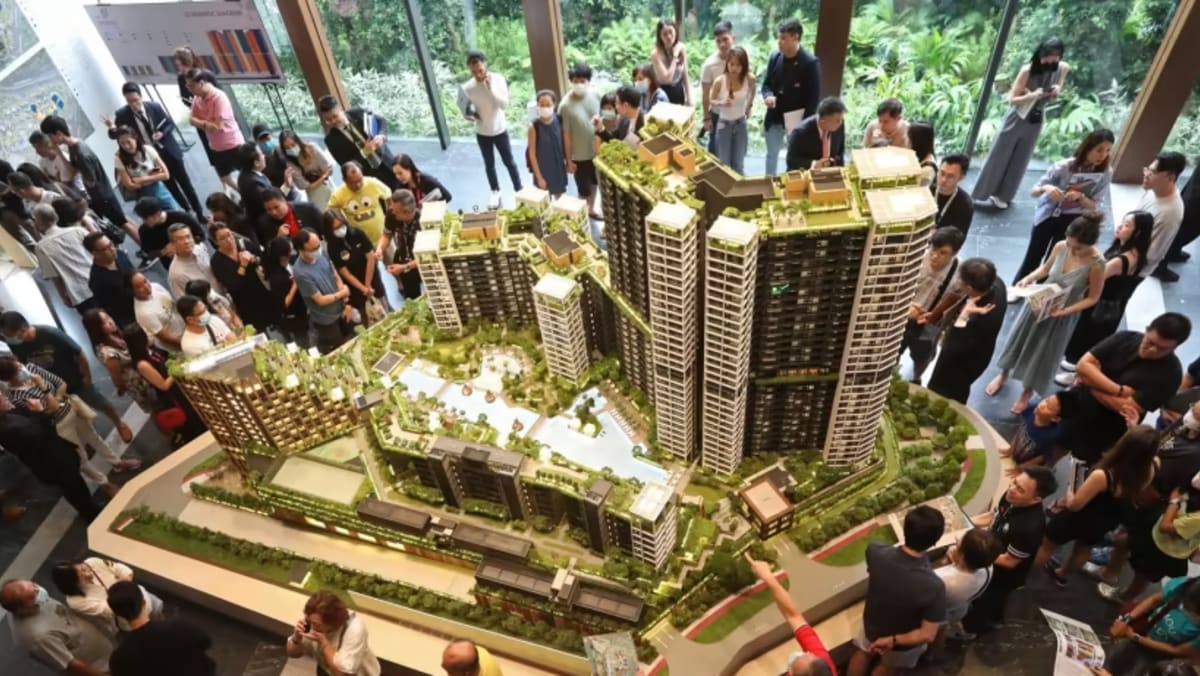
SINGAPORE: Although Anthony and his family of six are now living in a freehold condominium around the Holland Road area, he is planning to buy a second private property.
He is eyeing a new three-bedroom unit at the Reserve Residences 99-year leasehold condominium development in Beauty World, with sizes ranging from 883 to 1,378 sq ft.
“I’m buying it for living-in. But also on the side, if there’s appreciation, why not?” said the 50-year-old, who spoke to TODAY at the project's sales showroom recently.
Anthony, who works in the IT industry and declined to give his full name, said that he does not intend to let go of his existing property even after buying a second condominium.
He is not deterred by the fact that as the owner of a second property, he would have to fork out hundreds of thousands of dollars in tax due to raised additional buyer stamp duty (ABSD), following the latest round of cooling measures rolled out in late April.
A person who buys a second property will have to pay 20 per cent in ABSD. A rough calculation based on the indicative per sq ft (psf) price starting from S$2,300 (US$1,700) by the developer of the Reserve Residences puts a three-bedroom unit at more than S$2 million, which means the potential tax for Anthony would be at least S$400,000.
He said that he “sees value” in the new development for the next 10 to 15 years, given that it offers attractive features, such as being part of an integrated development including retail space and a transport hub, as well as being located close to nature.
At the same time, he would consider renting out his first property for additional income, he told TODAY.
Anthony is among the many buyers who are prepared to pay more for newly launched condominium units despite their ever-rising sale prices and amid high mortgage rates and a slowing economy.
He explained that since yet-to-be-built properties — such as the one he intends to buy — will be paid for progressively, he would not feel the full weight of the prevailing mortgage rate on the entire loan upfront.
While the latest cooling measures are targeted at foreign and investor buyers, who comprise about 10 per cent of the private residential property market, the government has over the last 12 years or so introduced many rounds of measures targeting general buyers in a bid to ensure that the property market remains sound and does not run ahead of economic fundamentals.
This was done through the tightening of loan rules, raising of ABSD as well as seller duty duties, which was aimed at discouraging speculation.
However, prices for new condominium units have continued to climb, especially in non-central areas, outstripping household income growth.
Even so, the response to recent condominium launches has been described by analysts as healthy and robust, with some projects selling more than half of their units over a weekend.
These include 99-year leasehold developments in non-prime areas that are selling for an average price of over S$2,400 psf, prices at a level unheard of until very recently.
With the jury still out on whether the market for new condominiums is frothy or fundamentally strong, TODAY takes a closer look at what fuels the demand for such properties despite the hefty price tags and uncertainties in the economy and what are the possible implications.
HOW PRICES HAVE SOARED
The overall private residential property market has been showing “strong price momentum”, several housing experts told TODAY.
Real estate economist from the National University of Singapore (NUS) Sing Tien Foo noted how the Urban Redevelopment Authority (URA) private residential property price index had increased by nearly 40 per cent in five years from the last trough in the last quarter of 2017 to the first three months of this year.
“Most of the growth came in the last two years after easing of the COVID-19 measures,” said Professor Sing, who is provost’s chair professor at NUS' Department of Real Estate.
“The median non-landed housing price-to-income ratios have not increased significantly and were estimated at 12.4 and 12.7 in 2013 and 2023, respectively,” he said, referring to the overall non-landed private property market which comprises new launches and existing homes.
“Still, the high ratio of nearly 13 times income means that the median households will be priced out of the market.”
The URA divides areas in Singapore into 28 districts grouped in three regions: The core central region (CCR) such as Orchard Road and River Valley where most premium private properties are located; the less premium rest of central region (RCR); and the suburban or outside central region (OCR) where mass market condos are typically found.
For new launch condominiums specifically, data from real estate portal 99-SRX revealed that the price increase per square foot has been uneven across the three regions — though they all have outstripped median wage growth.
Bagikan Berita Ini














0 Response to "The Big Read: Why are buyers still snapping up new condos despite soaring prices? - CNA"
Post a Comment